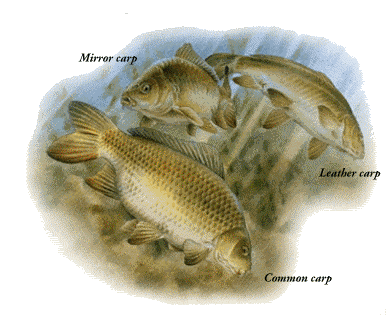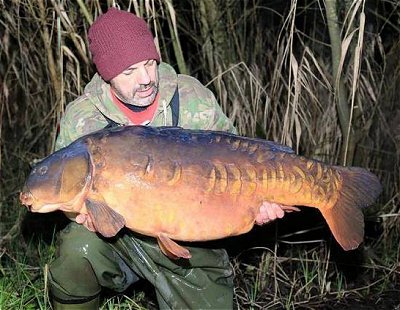|
Carpfishing UK - The Carp Facts Page |
|
|
|
The History of carp in the UK Cyprinus Carpio - The carp is one of the most adaptable fish in the country. Its introduction to England started as early as the mid 1300’s, when carp were imported from mainland Europe and reared in stew ponds. Today carp flourish in almost every river and lake in the country. From small village ponds to the largest, most powerful rivers. The carp has succeeded in every available habitat. Introduced initially by monks as a food source, carp became established and were stocked into estate lakes and fisheries, and once available, quickly became a target for anglers. At this time, the carp had a fierce reputation for being incredibly difficult to tempt, and was thought by some to be un-catchable. Slowly anglers developed their knowledge and techniques, culminating in the birth of modern ledgering techniques and beefier tackle, pioneered by the likes of the late-great Richard Walker. These anglers had none of the specialised tackle available today, and had to make their own, nets from hession sacks and bicycle wheels, specialised split cane rods arrived and eventually the first electronic bite alarm....Carp angling grew ever more popular during the mid-20th century until in 1952 when Richard Walker netted Britain’s first 40lb fish and ever since, carp have been one of the most sort after species. The British Record now stands at over 60lb, a barrier that was first broken by Gary Bayes with his capture of Two Tone at 61lb. Whilst carp this large are a rarity, they easily grow to over 10lb, with 20lb being considered specimen sized?. Carp are amongst the longest living fish species in the country with fish of over 60 years old being recorded, such as Redmire Pools "Raspberry" which was said to be around 67 years old when it died, most carp however will live for 10 - 20 years. The common carp is the original strain with the mirrors being genetically bred out of the stock. It's origins go way back some 2000 years and can be traced to the Danube river in Europe which runs from Germany to the Black Sea via the Danube Delta. In China, Carp were the first fish to be bread for food with several domesticated varieties emerging. Chinese domesticated varieties include the Mirror Carp, The Leather Carp and the Crucian Carp which is barbell-less and is a relative of the gold fish
|
|
|
|
| Carp Strains (common to the UK) | |
|
|
|
|
"Common Carp" - The most "common" or perhaps once the most common carp, have lots of small uniform scales all over, they vary in shade from a dark golden colour sometimes almost black to a near silver colouration but the scale pattern is complete and even across the fish. "Leather Carp" - True Leather carp are not necessarily just mirror carp without scales, there is actually a genetic difference. Leather carp can have a few scales but they do generally have a leathery appearance and quite often a small rounded tail, however, the dorsal row of scales is generally either absent or incomplete. Leathers also have reduced numbers of red blood cells which can slow growth rates. It's generally accepted however that a proper "carp anglers leather carp" has no scales at all. "Mirror carp" - Have numbers of large often shiney and mirror-like scales scattered randomly across the fish, the patterns vary greatly giving each carp an almost finger print like identity and making some mirror carp very recognisable amongst others of their kind. "Linear Carp" - Like a mirror but with a line of scales along the lateral line only, many think these to be the most prized and beautiful of all carp and they certainly can be quite stunning. "Grass Carp" - This is a member of the Cyprinidae family but is the only species of the genus Ctenopharyngodon. quite different to the king carp but is similar to the common carp as far as it's scale pattern is concerned, with a long slender torpedo-like body many say they resemble chub and are even given the disrespectful nickname of Chernobyl Chub. ----------------------------------------------------------------------------------------- The current UK carp record, Wasing Syndicate's Parrot, caught by Dean Fletcher in January 2016 at the massive weight of 68lb 1oz...
The Parrot has sadly since passed but will she ever be beaten? or has it already? there have been a couple of rediculous claims made to her crown since which were happily declined by the BRFC. ------------------------------------------------------------------------------------------
Breeding information - Carp mature at around 3-4 years for male fish and 5-6 years old for female fish. They spawn from around May-July and need a temperature around 16-22oC sustained over a varying number of days (typically 7-14 days) multiple spawning is common. The carp produce somewhere in the region of 100,000 - 200,000 eggs per kg of body weight so with some carp you can expect over 1,000,000 eggs per carp for each spawning, so over a lakes population this adds up to a massive amount of eggs. Sadly or so it seems most of these eggs will be eaten by insect larvae, birds, fish including carp and everything else that is looking for a nutritious meal. Quite often not a single carp will make it into adulthood from of the millions of eggs produced, some will become fry only to be eaten by other fish or birds and most of the remaining fry won't survive their first winter. While this sounds quite sad it's not really the case as it would only take a small percentage of these fry to survive each year to leave our fisheries totally overrun and indeed there is some such survival success on some waters but these are in the minority.... so the yearly harvest of eggs actually provide a yearly source of highly nutritious food and the odd few that do make the long journey to adulthood in ideal conditions can keep a water perfectly balanced, a perfect balance is perhaps quite rare..!!
How do to tell the different sexes - This is a very difficult task most times of the year and is best done during the breeding season, at this time of year the males usually loose much of their protective mucus and their body feels noticeably rougher, some say sandpaper like. The male develops small white lumps which account for the roughness known as tubercles which are often more noticeable around the head area. The females retain their mucus coating and are noticeably plump compared to the male fish, also the ovipositor (egg depositor) of the female carp may distend somewhat before, during and for a short while after breeding.
|

